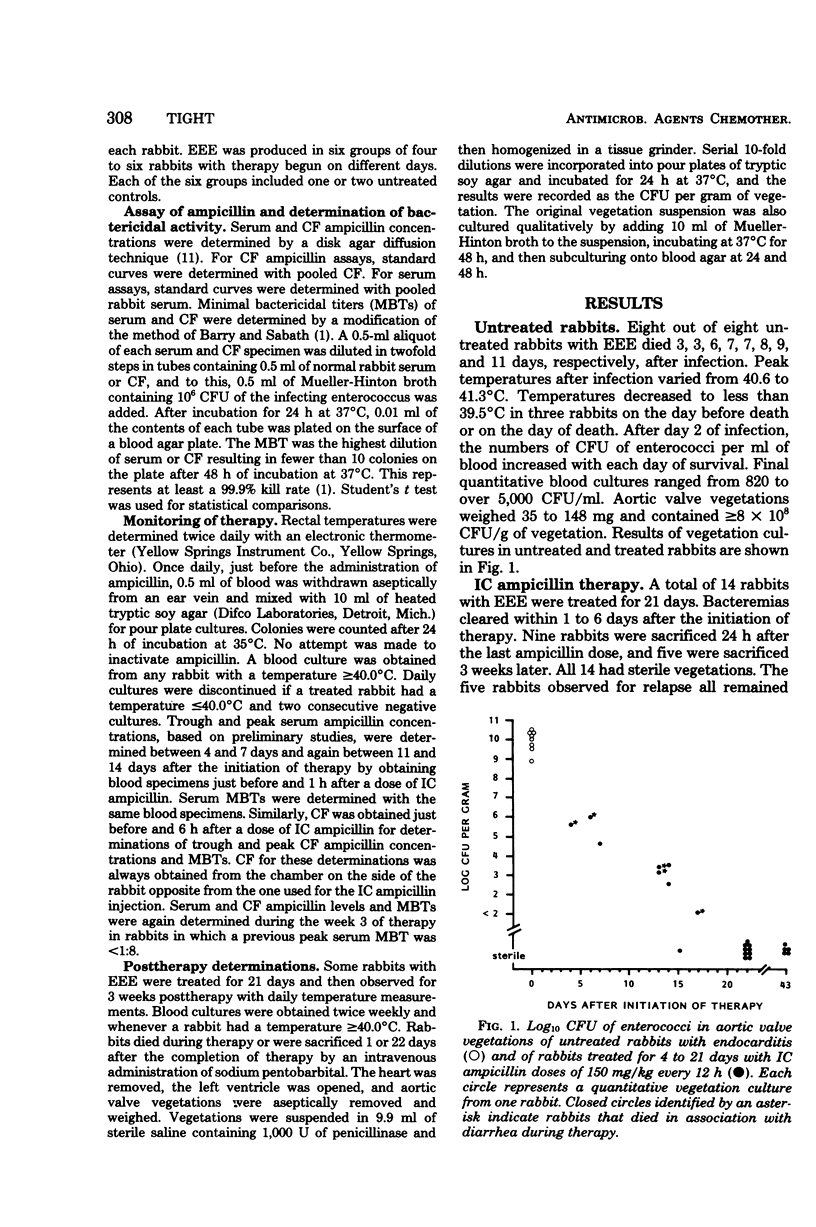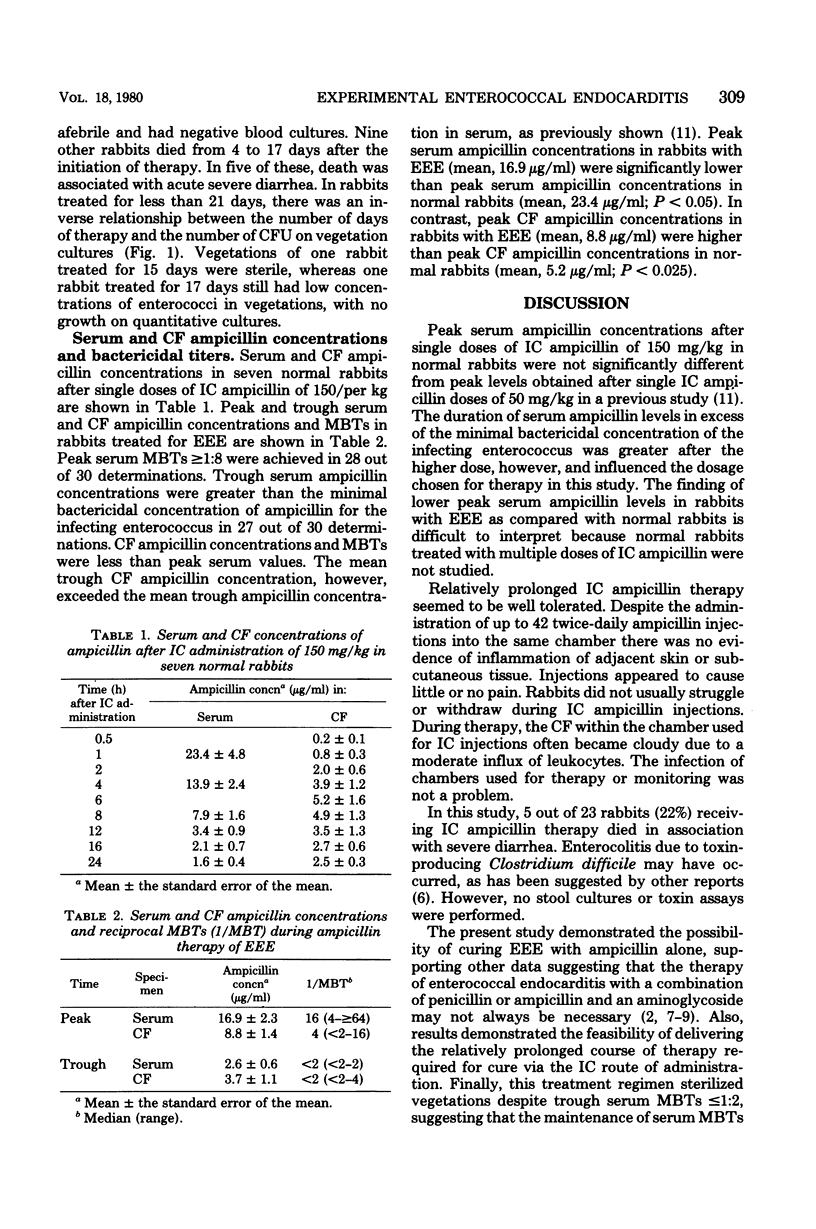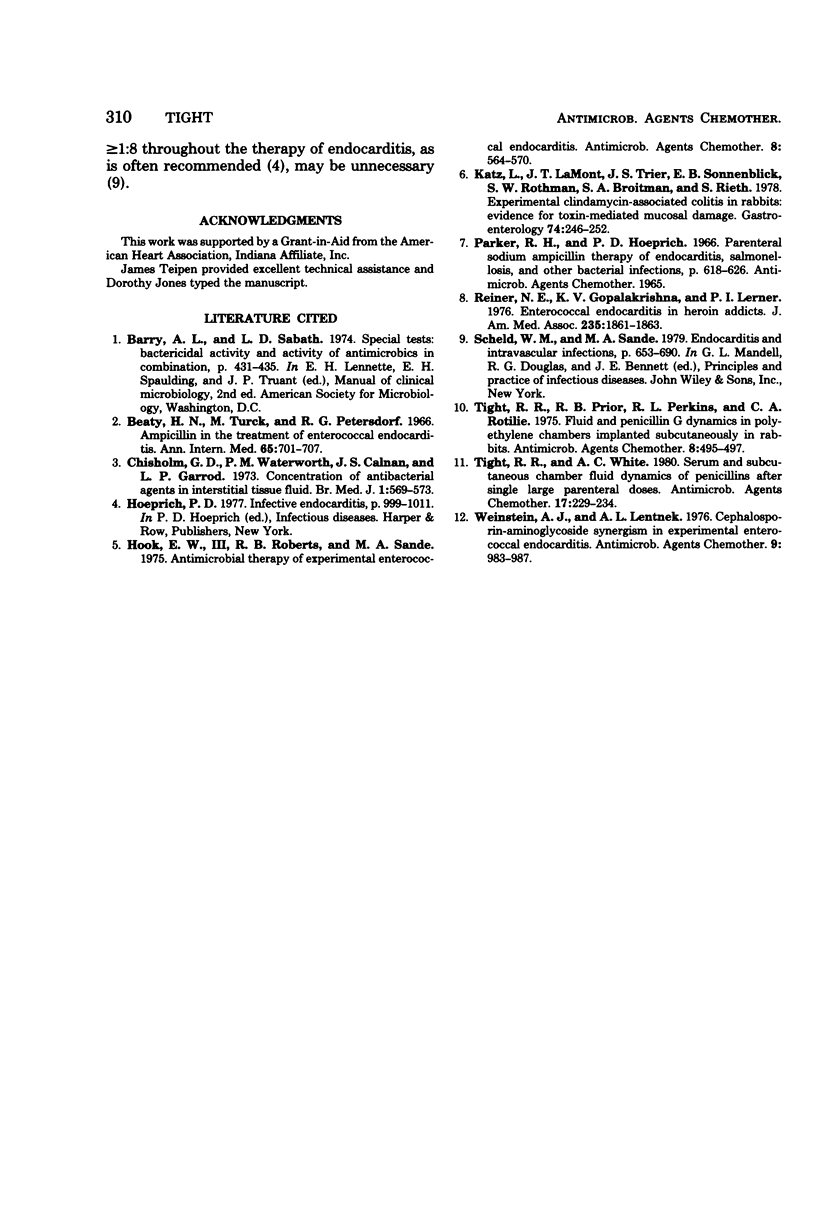Abstract
In rabbits with experimental enterococcal endocarditis, subcutaneously implanted perforated polyethylene chambers were used for ampicillin administration by intra-chamber injection. A total of 21 days of intra-chamber ampicillin therapy sterilized vegetations of 14 out of 14 rabbits with experimental enterococcal endocarditis. In rabbits treated for less than 21 days, the duration of therapy and quantitative vegetation cultures were inversely related. Peak serum minimal bactericidal titers were greater than or equal to 1:8 in 94% of the determinations. Trough serum minimal bactericidal titers were less than or equal to 1:2. The mean trough serum ampicillin concentration (2.6 micrograms/ml) was greater than the minimal bactericidal concentration of ampicillin for the infecting enterococcus and less than the mean trough chamber fluid ampicillin concentration (3.7 micrograms/ml). Relatively prolonged therapy with intrachamber injections seemed to be well tolerated. Combination drug therapy of enterococcal endocarditis may not always be required. The maintenance of serum minimal bactericidal titers greater than or equal to 1:8 throughout the therapy of endocarditis, as is often recommended, may be unnecessary.
Full text
PDF



Selected References
These references are in PubMed. This may not be the complete list of references from this article.
- Beaty H. N., Turck M., Petersdorf R. G. Ampicillin in the treatment of enterococcal endocarditis. Ann Intern Med. 1966 Oct;65(4):701–707. doi: 10.7326/0003-4819-65-4-701. [DOI] [PubMed] [Google Scholar]
- Chisholm G. D., Waterworth P. M., Calnan J. S., Garrod L. P. Concentration of antibacterial agents in interstitial tissue fluid. Br Med J. 1973 Mar 10;1(5853):569–573. doi: 10.1136/bmj.1.5853.569. [DOI] [PMC free article] [PubMed] [Google Scholar]
- Hook E. W., 3rd, Roberts R. B., Sande M. A. Antimicrobial therapy of experimental enterococcal endocarditis. Antimicrob Agents Chemother. 1975 Nov;8(5):564–570. doi: 10.1128/aac.8.5.564. [DOI] [PMC free article] [PubMed] [Google Scholar]
- Katz L., LaMont J. T., Trier J. S., Sonnenblick E. B., Rothman S. W., Broitman S. A., Rieth S. Experimental clindamycin-associated colitis in rabbits. Evidence of toxin-mediated mucosal damage. Gastroenterology. 1978 Feb;74(2 Pt 1):246–252. [PubMed] [Google Scholar]
- Reiner N. E., Gopalakrishna K. V., Lerner P. I. Enterococcal endocarditis in heroin addicts. JAMA. 1976 Apr 26;235(17):1861–1863. [PubMed] [Google Scholar]
- Tight R. R., Prior R. B., Perkins R. L., Rotilie C. A. Fluid and penicillin G dynamics in polyethylene chambers implanted subcutaneously in rabbits. Antimicrob Agents Chemother. 1975 Oct;8(4):495–497. doi: 10.1128/aac.8.4.495. [DOI] [PMC free article] [PubMed] [Google Scholar]
- Tight R. R., White A. C. Serum and subcutaneous chamber fluid dynamics of penicillins after single large parenteral doses. Antimicrob Agents Chemother. 1980 Feb;17(2):229–234. doi: 10.1128/aac.17.2.229. [DOI] [PMC free article] [PubMed] [Google Scholar]
- Weinstein A. J., Lentnek A. L. Cephalosporin-aminoglycoside synergism in experimental enterococcal endocarditis. Antimicrob Agents Chemother. 1976 Jun;9(6):983–987. doi: 10.1128/aac.9.6.983. [DOI] [PMC free article] [PubMed] [Google Scholar]


